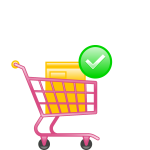Key Takeaways
- Holiday volumes spike handling errors—have a clear lost & damaged playbook ready before peak.
- Act within the first hour: acknowledge, investigate, set an ETA for resolution, and offer a make-good path.
- Package to survive peak: right-size cartons, internal cushioning, edge protection, and drop tests on top SKUs.
- Standardize evidence (photos, scan history, proof of value) so claims go through in one pass.
- Offer shipping insurance/replacement guarantees on high-risk orders to cap downside and speed refunds.
Introduction
The holiday season should be about celebrating sales, not fielding angry emails about missing or broken packages.
The good news: you don’t have to white-knuckle your way through the peak season, hoping nothing breaks. Lost and damaged orders are the most expensive CX moments of the year, but the fix is simple. It is a repeatable play that blends packaging discipline, proactive communication, and fast claims.
Here’s how to turn chaos into control.
What should you do the moment a package is reported lost or damaged?
Lost (no movement / stuck between scans)
- Acknowledge as early as possible with empathy + next steps.
- Triage: check last scan, GPS/stop notes (if available), neighbor/office/locker, signature status.
- Set a clock: “We’ll update you by <time>.” Create a 48–72 hr locate window before reship/refund.
- Open a trace with the carrier; attach proof of value + item description.
- Pre-decide the outcome (reship/refund/store credit) if not found by the deadline.
Damaged (delivered or in transit)
- Acknowledge and ask for 3 photos: outer carton, inner packaging, product.
- Decide disposition: keep/scrap/return-to-vendor based on value and policy.
- Instant make-good: reship or refund; don’t wait on the carrier’s decision if policy allows.
- File the claim with evidence attached (photos, invoice, SKU, packaging notes).
Of course, the best Lost and Damaged response is the one you never have to make. Let’s talk prevention.
How do you prevent holiday damage before it happens?
- Carton right-sizing: minimize empty space; lock SKU-to-carton mapping for top 20 movers.
- Internal protection: edge guards for rigid goods; double-wall or inserts for heavy/fragile items.
- Moisture & temperature: liners or insulated mailers for climate-sensitive SKUs.
- Seals & labels: “Fragile,” “Do not crush,” orientation arrows help, but don’t replace real protection.
- Fulfillment QA: random open-box checks per shift; photo-at-pack to prove pre-ship condition.
But even with great packaging, accidents happen. When they do, communication becomes your recovery tool.
Also read: Festive Packaging Ideas To Drive Up Holiday Sales
How can proactive communication turn a lost or damaged delivery incident into loyalty?
Never let the customer chase you. Own the next update time. Track packages and, if possible, re-route them back to their original destination (only for lost).
Give a clear outcome path (reship/refund) and when it triggers.
“We’ve processed a replacement today. You’ll get a new tracking link shortly. If the original shows up, it’s yours to keep—no action needed.”
Use branded tracking and issue alerts so customers don’t live in their inbox.
This can be particularly helpful during the holiday season when customer satisfaction matters to increase repeat purchases. Recover costs incurred with lost and damaged claims.
Speaking of recovering costs, filing claims correctly is half the battle.
What's the fastest way to get carrier claims approved?
- One-pass dossier: commercial invoice, order value, photos (outer/inner/product), last scan, tracking URL, and packaging spec.
- Correct cause codes: “damage in transit,” “loss after pickup,” “porch theft (if covered)”—match the carrier’s taxonomy.
- File within the window: submit as soon as the outcome is decided; some carriers have short holiday cut-offs.
- Centralize: one queue, weekly audits of denials, and a feedback loop to packaging and lanes.
Despite this, manually filing claims can be tricky and time-consuming. Hence, use an automated lost and damaged claims solution like LateShipment.com.
Now, what about protecting yourself before issues even occur? That’s where shipping insurance comes in.
Shipping insurance shifts financial risk off your books. Instead of eating the cost of a lost $200 order, you file once and get reimbursed. During peak, when incident rates climb and margin pressure is real, insurance caps your downside and lets you make customers whole without hesitation.
So should you offer it?
Should you offer shipping insurance or a replacement guarantee?
Yes especially for high-value or fragile orders and lanes with higher incident rates. Frame it as “Instant replacement if something goes wrong” at checkout and in tracking emails. For VIPs, consider waiving the fee during peak to protect loyalty and AOV.
Finally, you need to know if all this is working.
Which metrics prove your Lost and Damaged program works?
- WISMO rate (post-purchase inquiry %).
- Time-to-first-response and time-to-resolution.
- Incident rate by lane/SKU/packaging type.
- Reship vs. refund mix and cost per resolution.
- Repeat purchase rate after a resolved incident.
- Avoidable damage rate (prevention wins from packaging changes).
Conclusion — what next?
In the whirlwind of holiday e-commerce, the last thing customers or your team needs is the disappointment of lost and damaged packages. As peak approaches, prevention beats apology: stronger packaging, proactive communication, and clear make-good rules turn chaos into control.
Put the playbook to work now. Lock SKU-to-carton mappings, run quick drop-tests on top movers, set a 48–72-hour locate window for “lost,” and standardize your evidence checklist so claims are clear in one pass. Then instrument the seven metrics above and review them daily through peak.
Do that, and you’ll navigate the rush with confidence orders arrive intact more often, resolutions are faster when they don’t, and customers remember a smooth, respectful recovery. With a little discipline (and the safety net of shipping insurance or replacement guarantees where it makes sense), the holidays can be a season of delight and fulfillment—not a season of avoidable write-offs.
Frequently Asked Questions
How long should I wait before declaring a package lost?
Set a 48–72 hr locate window after the last meaningful scan, then reship/refund and file a claim.
Carrier shows “delivered,” customer says not received—what now?
Check GPS/driver notes (if available), neighbors/office/locker, and signature status. If still missing, treat as lost per policy and make it right.
What photos do you need for a damage claim?
Outer carton (all sides), inner packing, and product close-ups. Add a shot of the shipping label.
Should I refund or reship first?
If the item is still needed and in stock, reship. If time-sensitive or OOS, refund immediately.
What about high-value items?
Require signature, use double-wall cartons, and enable insurance/guarantee; add tamper-evident tape.
How do international Lost and Damaged cases differ?
Expect longer locate windows and more documentation. Align customs forms with invoice values to avoid disputes.
How can I prevent porch piracy?
Signature on thresholds, lockers/pickup points, delivery instructions, and real-time delivery alerts reduce risk.








